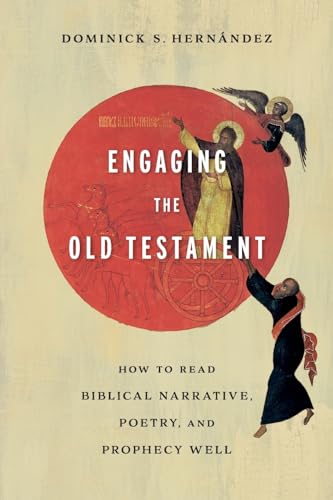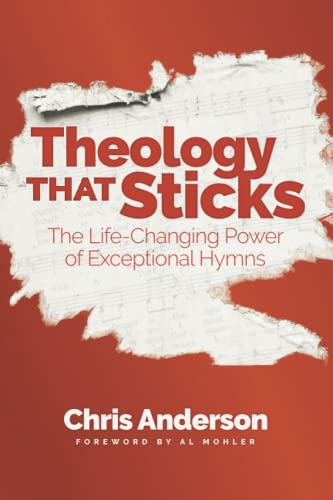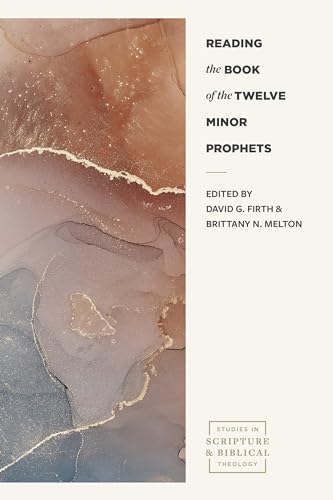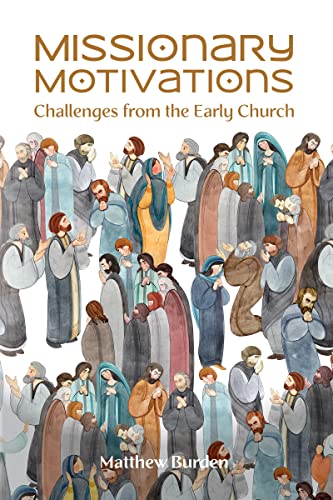Engaging the Old Testament: How to Read Biblical Narrative, Poetry, and Prophecy Well
Written by Dominick S. Hernández Reviewed By Douglas R. FyfeDominick Hernández has delivered up this book as his introduction to the Old Testament. He wants people to be able to read the whole of the Scriptures as the word of God and to read it well (p. ix). He wants people to understand the way real authors wrote to real people in real circumstances in real times in real history. His book attempts this task through two interweaving approaches: instruction and demonstration. Chapters 1–6, 14–15, 17–18 focus on instruction, while the remaining chapters (7–13, 16, 19) demonstrate what it is to read well.
From the outset of this book, I really appreciated the personal tone. Readers are gifted an insight into Hernández’s life through his education, childhood, and other experiences, and how they all worked together to grow his love for reading well and his appreciation of the artistry of how the biblical authors went about their task. Preeminent from the very beginning is how highly Hernández values Scripture and his pastoral concern for others to do the same.
In these opening chapters, Hernández attempts to cover multiple bases, including the difficulty of translation but drawing from the humorous difficulties in communicating across different Spanish dialects. This is important, because the Scriptures are both fully divine (so we need to heed God’s words) as well as fully human (so we need to be attuned to all that it means to be a human author). In both chapters 4 and 5, I would have appreciated a reference to Paul Ricœur, who helps make sense of the ideas in chapter 4, but also because he coined the terminology appropriated in chapter 5. (For an accessible entry to Paul Ricœur, see Kevin J Vanhoozer, Biblical Narrative in the Philosophy of Paul Ricoeur: A Study in Hermeneutics and Theology [Cambridge: Cambridge University Press, 1990]).
Chapter 6 is the final chapter before the book changes course, and it explains what narratives do to readers. The ideas clearly presented here were insightful and are helpful references for readers to consider, as Hernández explains how narratives withhold information, present an omniscient narrator, and guide readers through their recount to consider the implications of narratives.
With chapter 7 a new phase of the book begins, which changes the character from the first part. The first six chapters used personal illustrations and explained hermeneutics and genre, while from chapter 7 the pattern is to use quotes from classic books to illustrate his biblical theological tour of the Old Testament. Hernández takes his readers through the exodus to the exile, demonstrating how his principles of reading narrative well bears fruit. It might be more accurate to call the book at this point an Old Testament survey rather than an Old Testament introduction.
Through these chapters, valuable insights were presented into the text. For example, they demonstrate how Christians can learn to love the law (by reading in the wider narrative), the importance of the Passover (Pharaoh’s fears of an Israelite army were unfounded; God defeated him all on his own), Rahab as the hero (with a wonderful aside explaining Moses’s disobedience), the weirdness of Judges (with Samson as the key), and so on through to the exile. Hernández shows the connections attentive readers might make, while suggesting that his readings are not necessarily final; anyone reading closely is encouraged to disagree by providing a “more reasonable interpretation” (see esp. p. 279).
In chapters 14–15, Hernández returns to the question of genre, with a focus on poetry, drawing heavily on the important work of Adele Berlin. In chapter 15, Hernández delves into technical aspects, explaining the language of source and target domains in terms of how to move from the metaphor to understand the argument. It would seem there are two purposes here: the smaller one is to help correct those with overly literal readings of texts to embrace metaphor, while the larger issue is to help surface readers delve deeper into texts, to read more slowly, and to be able to trace and recognize the reuse of metaphors across the Bible. Chapter 16 demonstrates this approach to metaphor with reference to Hernández’s previous work on Job, explaining how “light” and “dark” unlock the argumentation of the book.
Chapters 17–18 look at prophecy, beginning with the prophets themselves. These chapters try to distinguish (or at least, explain the distinction) between the prophets and their writings. I would have liked a little more clarity in the explanations and implications here, as Hernández considers the progression from speaking to writing to editing to addition to compilation. The rough outline is helpful: he explains that “select accounts of the prophets’ lives and words were recounted and crafted into compositions by the biblical authors for the purpose of illustrating their theological purposes” and that “all accounts of words and deeds that were written down were necessarily stylized” (p. 234). However, a fuller account anticipating readers’ questions would benefit an introductory work such as this. Hernández then goes on to use the oracles against the nations to explain some of the poetry of prophecy, highlighting the presence of alliteration and assonance. I was not convinced by his assessment of the evangelistic purpose of the oracles (as audiences heard them, “they were moved to be a prophetic voice to those around them”; p. 255); as I understand them, they function more as an encouragement and rebuke to their native hearers. Nevertheless, I am open to being convinced otherwise.
In the final chapter, Hernández takes readers through Isaiah’s Suffering Servant Songs to help Christian readers wrestle with the servant’s identity and to show again how reading well bears fruit. This chapter offers pointers to understanding the move from proximate to long-term prophecy, although readers might benefit from longer treatments on reading prophecy effectively, such as Steven McKenzie’s How to Read the Bible: History, Prophecy, Literature (Oxford: Oxford University Press, 2005), which provides a nuanced approach to prophecy beyond the popular assumption of long-range predictive prophecy.
Hernández is clearly passionate about helping people read well, through all the genres of the Old Testament. However, this stated purpose is slightly at odds with the proportions of his book, as the majority of the content is focused on narrative, with only two chapters of theory and one chapter of illustration for each of poetry and prophecy. I thought the six chapters of illustration for narrative was a little excessive, turning this into a different book from that point (again, survey rather than introduction). There was also a loss of the personal tone which drew me in at the beginning, such that it began to feel formulaic (book quote, explanation, link to the Bible, explanation, illustration). It was still effective, but the character of the book did certainly change.
Readers will finish this book wanting to read more of Adele Berlin on poetry and would benefit from engaging with Paul Ricœur. Additionally, more precise examination of how prophecy works would be welcomed. Nonetheless, all will be enriched by Hernández’s careful readings of Scripture and will do well to heed his exhortations to slow down our reading. His attention to the fine details of the Old Testament will challenge all readers to approach the text with fresh eyes, attuned to the artistry and personality of these divine and human writings.
Douglas R. Fyfe
Douglas R. Fyfe
Carlingford, NSW, Australia
Other Articles in this Issue
Menzies responds to Tupamahu’s post-colonial critique of the Pentecostal reading of Acts and the missionary enterprise...
The Lamblike Servant: The Function of John’s Use of the OT for Understanding Jesus’s Death
by David V. ChristensenIn this article, I argue that John provides a window into the mechanics of how Jesus’s death saves, and this window is his use of the OT...
Geerhardus Vos: His Biblical-Theological Method and a Biblical Theology of Gender
by Andreas J. KöstenbergerThis article seeks to construct a biblical theology of gender based on Geerhardus Vos’s magisterial Biblical Theology...
Is the One God of the Old Testament and Judaism Exactly the Same God as the Trinitarian God—Father, Son, and Holy Spirit—of the New Testament and Christian Creeds?
by John Jefferson DavisThis article argues that the One God of the Old Testament and Judaism is exactly the same God as the Trinitarian God of the New Testament and Christian creeds...
A well-known Christian intellectual and cultural commentator, John Stonestreet, has often publicly spoken of the need for Christians to develop a theology of “getting fired...






